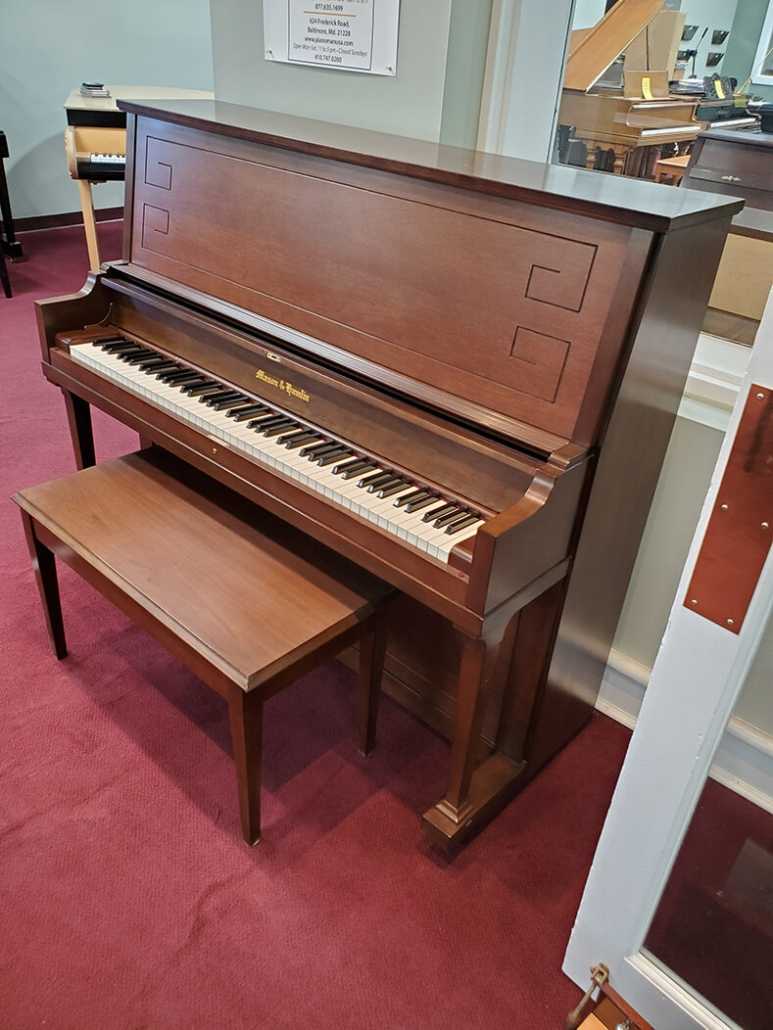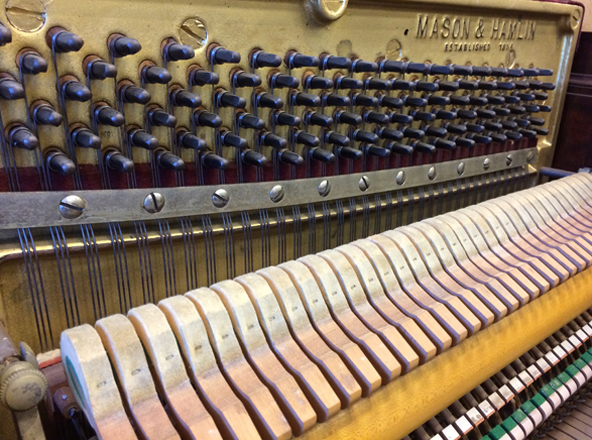


Pianos from Mason & Hamlin are among the heaviest built and most durable instruments ever produced. (This was discontinued due to its expensive, proprietary design.) The famous Tension Resonator has been a staple of a standard Mason & Hamlin instrument for decades. Early Mason & Hamlin ‘screw stringer’ pianos utilized an interesting system that resulted in very stable tuning. Throughout the company’s history, advancement in design and engineering has been one of their foremost goals. Ranging from the smaller 5’4″ Model B to the imposing 9’4″ Model CC, Mason & Hamlin Pianos continue in popularity in both personal and institutional use. Mason & Hamlin Grand Pianos are known for being ‘overbuilt.’ This results not only in exceptional structural strength but also in a full, rich tone that has made them preferred by numerous pianists. It is common to see century-old Mason & Hamlin instruments in pristine structural condition. This also adds additional structural integrity to an already incredibly strong cabinet design. This allows the sound to remain strong for the life of the piano. Most pianos’ soundboards tend to wear down and fall flat over time, but the metal Tension Resonator system helps to prevent that problem. This Crown Retention System involves a slightly bowed soundboard that increases energy transfer from the strings to the soundboard, creating a rich and powerful tone. The Tension Resonator is a large metal spider that links with an uncommonly thick hard rock maple rim and other features to create a soundboard Crown Retention System. “The Costliest Piano In The World” | Past Company Slogan He was the inventor who developed the famous Tension Resonator and later rose to become the President of the company.

In 1895 the piano division was reorganized by German piano designer Richard W. Knowing that they required assistance as they entered the cutthroat piano industry, they hired some of the best designers they could locate to assist them. It was not until 1881 that they began developing their pianos using a slow, meticulous process, fine materials, and keen attention to detail. Like other piano makers, they competed and won with demonstrations of their products in competitions such as the Paris Exhibition. They slowly began to build a reputation for quality and high standards. Hamlin and Mason continued to develop their discoveries. Their small company benefited from their attention to detail and limited production. It is suitable for a serious pianist at any level, especially at this price.The Mason & Hamlin company was born in 1854, one year after the founding of another American music icon, Steinway & Sons. This Model A is in good condition and has been in NM its entire life.
#Used mason hamlin series#
The CRS is a series of spoke-like turnbuckles under the piano pulling inwards from all sides, keeping the rim from ever spreading, thus retaining the necessary tonal “crown” of the soundboard.

Their grand pianos are famous for being overbuilt, with extra thick, wide-bodied rims, full-perimeter (heavy!) cast iron plates, and the patented metal tension-resonator Crown Retention System (often referred to as the “Spider”). Considered to be performance-level caliber, Mason & Hamlin pianos were often selected by top-tier music schools, teachers, churches, and advanced pianists. Along with Steinway, Chickering, Knabe, Sohmer, and others, they innovated, collaborated, and refined the instrument into what we know as the modern piano. Mason & Hamlin is one of the great piano builders that started it all in the American Northeast.


 0 kommentar(er)
0 kommentar(er)
